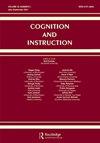Using Sense-Making Moments to Understand How Elementary Teachers’ Interactions Expand, Maintain, or Shut Down Sense-making in Science
IF 2.6
1区 心理学
Q2 PSYCHOLOGY, EDUCATIONAL
引用次数: 23
Abstract
Abstract Eliciting, noticing, and responding to students’ sense-making is important for advancing students’ understanding and fostering meaningful participation in science. By sense-making, we mean wrestling with ideas, language, experiences, and perspectives in a community to figure out how and why the world works. In the bustle of an elementary classroom, noticing and productively responding to the seemingly disorderly processes of sense-making presents challenges for teachers. Further, sense-making interactions are especially consequential for racially, linguistically and culturally minoritized youth whose ways of knowing are more expansive than the narrow conceptions of science present in schools. One core challenge for supporting sense-making in classrooms has been understanding the nature of these complex, dynamic, and multi-faceted interactions. To address this challenge, we analyzed videos of classroom sense-making interactions along with teachers’ reflections about those interactions to focus on sense-making moments or the composite set of moments called episodes. Doing so enabled us to understand pedagogical moves, responses and resources that were leveraged in sense-making interactions as well as how teachers interpreted those moments. It also enabled us to determine characteristics of those interactions that expanded, maintained, or shut down opportunities for sense-making. We illustrate these findings using three cases chosen from a larger multiple studies research project with early career and experienced elementary teachers. These three nuanced cases deepen our collective understanding of complex sense-making interactions in elementary classrooms by offering alternative analysis of sense-making interactions and their consequences on future sense-making. For example, while one sense-making episode initially appeared chaotic, pedagogical moves to incorporate emergent ideas into the science narrative and challenging and connecting ideas moved toward expanding opportunities for sense-making. Unpacking sense-making moments is critical for understanding the nature and consequences of sense-making moments as well as how to better support teachers in providing sense-making opportunities for all students in science.利用意义建构时刻来理解小学教师的互动如何扩展、维持或关闭科学中的意义建构
摘要激发、注意和回应学生的感觉对于提高学生的理解和培养有意义的科学参与是重要的。所谓意义创造,我们指的是在一个社区中与思想、语言、经验和观点进行斗争,以弄清楚世界是如何运作的以及为什么运作的。在繁忙的小学课堂上,注意到并有效地应对看似无序的感官制造过程对教师来说是一个挑战。此外,对于种族、语言和文化上少数民族的年轻人来说,有意义的互动尤其重要,他们的认识方式比学校里狭隘的科学概念更广泛。支持课堂感知的一个核心挑战是理解这些复杂、动态和多方面互动的本质。为了应对这一挑战,我们分析了课堂感知互动的视频,以及教师对这些互动的反思,以关注感知时刻或称为情节的复合时刻。这样做使我们能够理解在有意义的互动中使用的教学动作、反应和资源,以及教师如何解读这些时刻。它还使我们能够确定那些扩大、维持或关闭有意义的机会的互动的特征。我们使用三个案例来说明这些发现,这三个案例是从一个更大的多研究项目中选择的,这些项目涉及早期职业生涯和经验丰富的小学教师。这三个细致入微的案例通过对感知互动及其对未来感知的影响进行替代分析,加深了我们对小学课堂中复杂感知互动的集体理解。例如,虽然一个有意义的情节最初看起来很混乱,但将新兴思想融入科学叙事的教学举措,以及具有挑战性和联系性的思想,都朝着扩大有意义的机会的方向发展。打开有意义的时刻对于理解有意义时刻的性质和后果,以及如何更好地支持教师为所有科学学生提供有意义的机会至关重要。
本文章由计算机程序翻译,如有差异,请以英文原文为准。
求助全文
约1分钟内获得全文
求助全文
来源期刊

Cognition and Instruction
Multiple-
CiteScore
7.90
自引率
12.10%
发文量
22
期刊介绍:
Among education journals, Cognition and Instruction"s distinctive niche is rigorous study of foundational issues concerning the mental, socio-cultural, and mediational processes and conditions of learning and intellectual competence. For these purposes, both “cognition” and “instruction” must be interpreted broadly. The journal preferentially attends to the “how” of learning and intellectual practices. A balance of well-reasoned theory and careful and reflective empirical technique is typical.
 求助内容:
求助内容: 应助结果提醒方式:
应助结果提醒方式:


